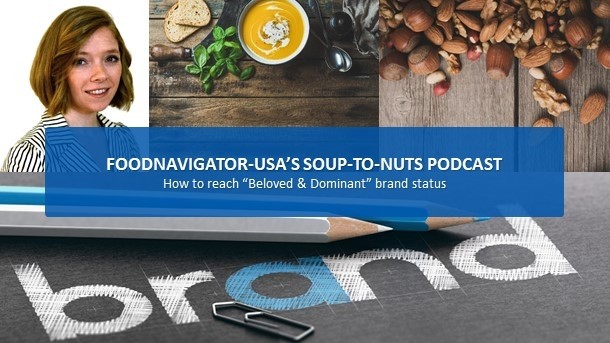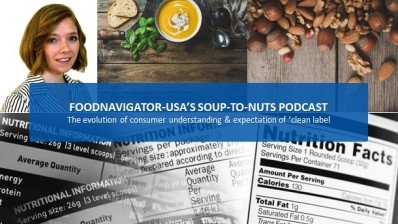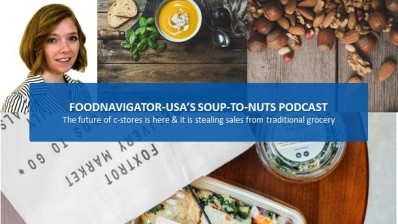Soup-To-Nuts Podcast: Why having a killer idea, product & passion isn’t enough for long term success

And while branding expert David Lemley argues in his new book Beloved & Dominant Brands that this is good because “the world needs more companies devoted to environmental sustainability, transparency in sourcing, clean ingredients, fair wages and ethical practices,” he also notes that “good isn’t enough” to sustain a company long-term in today’s competitive food and beverage marketplace.
In this episode of FoodNavigator-USA’s Soup-To-Nuts podcast, Lemley breaks down the explosive growth of ‘better-for-you brands,’ explains why “it’s no longer enough to have that killer idea and a killer product and … founder’s passion,” and shares how brands can protect themselves from an inevitable flood of me-too products by reaching what he calls “beloved & dominant status.”
[Editor's Note: Never miss another episode of FoodNavigator-USA's Soup-To-Nuts podcast -- subscribe on iTunes, today!]
The rise and fall of better-for-you brands
Over the past seven to ten years, Lemley explains that better-for-you brands have set a new standard for products across categories, but in doing so the values that once set them apart have become table stakes for many modern consumers.
“Better-for-you brands come from two distinct camps. The first would be the brands that are out to make natural and organic and clean ingredients mainstream….And then there’s another sector that is really driven by their ideology and wanting to make the world a better place and are triple-bottom line focused,” Lemley said.
Entrepreneurs in both camps have made significant inroads with consumers in recent years in part because consumers are digitally- and social-media focused. As shoppers gather knowledge they are demanding that brands be ‘citizens of our world.’ By choosing brands that do good, consumers also feel better about their decisions and themselves.
However, Lemley cautions, better-for-you brands run into trouble if they are so focused on doing good that they forget about the real world and the need to build a brand beyond just the product they offer. Likewise, he warns, if a young company or brand relies too much on an entrepreneur’s charisma it will struggle on the shelf when that person isn’t there to project a halo effect.
“Above 85% of new product ideas in this category fail within the first year,” in part because entrepreneurs are so optimistic that they are not focused on real world applications, he said.
From ‘first and only’ to ‘one of many’
Focusing on the business side of launching a brand may sound obvious, but Lemley says it is easy for entrepreneurs that take off out of the gate to underestimate the risks because they are riding a wave of success. However, he warns is his book “no matter how experienced or well-intentioned their leadership teams, we see that [better-for-you] brands tend to follow a predictable trajectory.”
Lemley explains this includes starting out as the “first & only” product that meets a consumer demand, which naturally evolves to “dominant by default,” at which point the risk of becoming “one of many” emerges. But the rise of me-too products doesn’t have to be the end of the ride for a once cutting-edge, better-for-you product if the entrepreneurs behind it can achieve what Lemley calls in his book “beloved & dominant” status.
Conduct a competitive audit that examines the ‘Brand Ecosystem’
To do this, Lemley says, brands need to conduct a competitive audit to identify not just what is immediately next to their products on shelf, but what else consumers are reaching for more broadly across categories instead of their products. This process also can help brands better identify who buys their product and what they value, he said.
When Lemley helps clients at his Seattle-based firm Retail Voodoo conduct a competitive audit, he benchmarks the competitive landscape with seven marketing disciplines that he calls the “Brand Ecosystem.”
This system, which is outlined in his book Beloved & Dominant Brands, takes the form of a pyramid with seven levels – the first, and largest of which, is customer education and last, smallest level, is social.
“Most people have that backwards. Most brands, particularly brands that are quote targeting millennials … [are] focused on social first” and are “trying to just look good but not having any depth of character,” he said.
The planks in between include public relations, advertising, in-store, website and direct – all of which Lemley outlines in greater detail in this week’s podcast and even more so in his book. To find learn more, listen to the full podcast or find Lemley’s book Beloved & Dominant Brands on Amazon.











